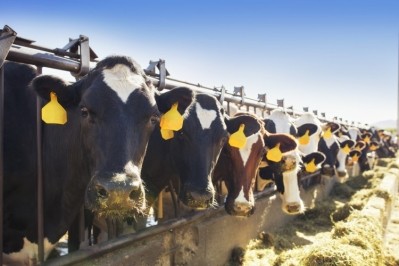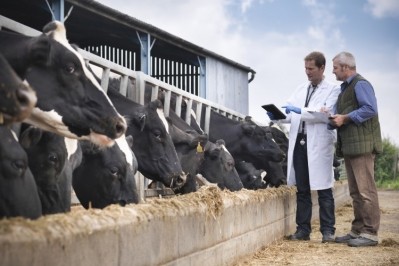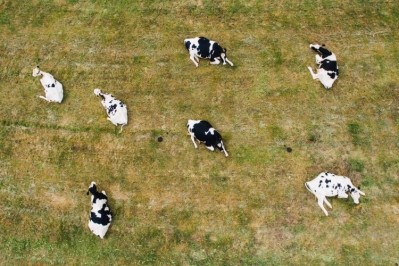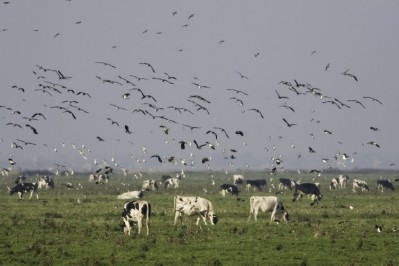Bird flu in US dairy: What we know so far plus tips for producers (updated)
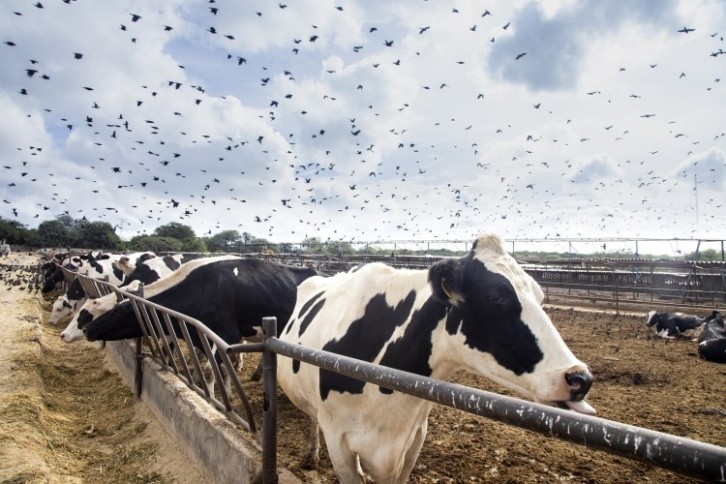
This article has been updated on April 2, 2024 to factor in the latest developments in the investigation.
Here’s how the events of the past two weeks unfolded.
What happened?
Speaking during a regularly-scheduled biosecurity webinar on March 27, Dr. Hayley Springer, Associate Clinical Professor at Penn State, said the current outbreak of highly pathogenic avian influenza (HPAI) virus began in 2022, with H5N1 being the primary strain. She said the virus had been identified in wild birds in every US state and had also affected domestic birds and other wild mammals, such as red foxes and skunks.
Cases of affected ruminants were only recently reported, and are thought to be the first US detections of HPAI in domestic ruminants.
On March 20, the Minnesota Board of Animal Health reported that a juvenile goat, which lived on a farm with a HPAI-positive poultry flock, had tested positive for the same virus, specifically the H5N1 strain. The goats and poultry had had access to the same space, including a shared water source. The investigation began when the owner of the farm notified the Board of unusual deaths of newly-kidded goats on the property. State veterinarian Dr. Brian Hoefs said the diagnosis was significant because “it highlights the possibility of the virus infecting other animals on farms with multiple species”. During the webinar, Dr. Springer also noted that “the opportunity for exposure was quite high in that herd”.
At the same time, the Texas Department of Agriculture was looking to identify a mystery illness affecting dairy cattle in the state. On March 25, the Texas Agriculture Commissioner confirmed the disease was caused by a strain of HPAI.
In a statement issued the same day, the US Department of Agriculture (USDA) alongside other federal agencies and state veterinarians announced it was “investigating an illness among primarily older dairy cows in Texas, Kansas, and New Mexico”, with samples collected for further testing from two farms in Texas and two in Kansas.
Addressing the latest findings, Dr. Springer said: “We’ve had over 20 farms affected by this unknown syndrome. [On] four of those farms, there were bird mortalities on the farm that stimulated some additional testing. Four farms in Kansas and Texas – two in each state - had samples submitted and they did HPAI testing. Three of those samples were raw milk samples from clinically ill animals and one was a mouth swab from an affected cow. We know these came back positive for HPAI [but] the strain has not yet been released.”
The USDA is advising that this is likely a 'multifactorial outbreak' – i.e. that there are multiple contributing factors to the outbreak besides the virus.
There has been no evidence of the disease affecting beef cattle or dry cows, and no evidence of intentional actions that have led to the outbreak.
How was the virus introduced on US dairy farms?
Both the USDA and veterinarians agree that the virus has likely been introduced on dairy farms by wild birds.
Dr. Alex Hamberg, Bureau Director of the Pennsylvania Department of Agriculture, revealed during an update for Pennsylvania dairy farmers on Wednesday, March 27, that the sequencing of the samples collected from Texas and Kansas farms matched the avian influenza that is circulating in the Central and Western Flyways or Pacific Flyways.
“It is most likely presumed [the virus] to be coming from infected birds, wild birds,” he said. “In this situation, the most likely way that this virus is introduced is through wild birds, specifically waterfowl are the biggest risk factor with highly pathogenic avian influenza.”
Dr. Springer added that though it is possible for songbirds, such as starlings, to also to carry HPAI, waterfowl carry the biggest risk of transmitting the virus. “We want to make sure that we're cognizant of that and really focus in on that first.”
What’s the risk of transmission from cow to cow, or cow to human?
Dr. Hamberg said the detections in dairy cows ‘appear to be a spillover event’ suggesting the transmission only occurred from birds to ruminants in locations where the virus was already present. “The data seems to be showing that this is direct infection from wild birds to dairy cattle,” he explained. “There is no evidence at this point to support transmission amongst dairy cattle.” [Editor's note: Since this article was originally published, the USDA confirmed the virus was present in a herd in Michigan that had taken stock of dairy cows from Texas, adding that cow to cow transmission could not be ruled out any more.]
“Genetically, this virus does not carry indicators that it would transmit easily to humans," Dr. Springer added. "It is likely that cattle are dead-end hosts; what that means is that when a pathogen enters a dead-end host, its ability to spread beyond that animal is relatively low.”
USDA also confirmed that testing by the National Veterinary Services Laboratories found that the virus hadn't evolved to be more transmissible to humans, meaning that the current risk to the public remains low.
However, on April 1, the USDA confirmed the first case of the virus in a person and linked the infection to the patient's exposure to sick dairy cows in Texas. The infected person is recovering and isolating, with their only symptom being eye redness. Federal and state agencies are investigating why and how the infection occurred.
How are dairy cows and milk production affected?
“What we know about this health condition is that on a herd level, we see reduced feed intake, reduced rumen motility, reduced bulk tank milk, so overall herd milk production declines and gradually herd production does return with time,” Dr. Springer explained.
“In addition to these herd level signs, about 10% of cows become more severely ill. It has generally been presented that these are older cows, so second-plus lactation, and that they're mid- to late lactation, typically over 150 days in milk.
“When they do present more severely ill, we tend to see abnormal milk. It's not like a typical mastitis milk, more like colostrum in how it looks. It tends to get very thick and has a bit of a yellowish to brownish tinge.”
She added that for farms that have conductivity meters, these can be used to indirectly identify abnormal milk.
In addition to changes in the milk, cows who have been infected by the virus tend to also have dry and tacky manure.
As for the effects on milk production, Dr. Hamberg said some of the affected cattle would “dry off very quickly - in a matter of a couple of days - or they'll start producing thicker colostrum-like milk.”
Dr. Springer said that while there were reports of some cows culled early due to not returning to production, “we are finding that most of these cows can return to production”. “As with any cow that gets really sick late in lactation, she may not come back to lactation quite as strongly as she was before it started, but deaths from this condition are extremely rare,” she added.
As for whether asymptomatic cattle could harbor the virus, Dr. Hamberg said that from testing done so far, the answer to this is negative.
How are commercial milk supplies affected?
USDA has said there is no concern about the safety of the commercial milk supply at this stage, as milk from impacted animals is being diverted or destroyed. Pasteurization also inactivates the virus, and only pasteurized milk can enter interstate commerce, meaning that there is no risk for consumers.
Dr. Alex Hamberg explained further: “The milk coming out of affected cows is abnormal and it's decreased, so it's unlikely to make it into the bulk tank to begin with. On top of that, this virus is inactivated by pasteurization. So we need to be very clear that this is not a threat to our food supply.”
As for concerns about an adverse impact on milk supply and dairy prices, since the outbreak has affected only a small number of farms, a major impact on supply or prices isn’t expected.
What should farm owners and workers do?
Dairy farmers are encouraged to stay vigilant and monitor their herds for any symptoms and contact their veterinarian if signs of illness are detected.
Speaking during the Penn State Extension webinar on biosecurity, Dr. Erin Luley, a pathologist at the Penn State Animal Diagnostic Lab, said that from talking with veterinarians dealing with the outbreak in the West, “it does seem that parlor workers are picking up the abnormal milk as one of the early indicators, but also increased feed refusals or overall decrease in bulk tank milk are other things we can look for. The herd level milk production, herd level feed intake, those seem to be the biggest indicators.”
For animals that have contracted the disease, supportive care “seems to be good enough for the cattle that are recovering from this over in Texas and Kansas and New Mexico,” according to Dr. Hamberg.
“Isolate them, try to reduce sources of stress, keep an eye on their feed and water intake, make sure they're not getting dehydrated,” he added. “Be very careful about using medications to make sure we're complying with the meat and milk withdrawal periods.”
PPE use: After it was confirmed that the virus had been transmitted to a person who had been exposed to a sick dairy cow, the CDC recommended that farmers use personal protective equipment, such as N95 masks and gloves, when working in direct contact with ill animals - find out more here.
Tips for managing bird populations
In her presentation, Dr. Springer said farmers should work to minimize risk from transmission from birds, primarily by addressing the three reasons why birds come to farms – for food, shelter and water. This can be done by:
- Removing natural food sources where possible
- Blocking bird access to cattle feed
- Removing bird feeders near the property
- Ensuring proper disposal of waste that can draw in birds of prey
- Limiting vehicle access (e.g. feed trucks) to areas that run close to a water source, e.g. duck pond
- Reducing access to areas for perching
- Eliminating areas with standing water, with water troughs also at risk
- Fencing cattle away from ponds
- Limiting the use of unfiltered surface water for cattle
Remember: Lethal removal of native birds is regulated in the US
“Ultimately, the recommendations here are going to come down to what your herd veterinarian recommends,” Dr. Springer added. “In general, we have seen cows recover with little more than supportive care. Especially if this does turn out to be a viral issue, we aren't going to be able to use things like antibiotics in these cases. But I recommend that you talk with your veterinarian in terms of how to manage it.”
Implementing biosecurity measures is now more important than ever, with farmer workers told to use boot covers, keep logs of who enters and exits the property, and more.
“One of the things we can do is make sure that you have boot covers or that you are truly and properly disinfecting footwear between farms,” Dr. Springer said.
“If you're going into animal areas, you should have clean coveralls for each operation that you're on.
“Knowing that HPAI may be a factor in this, I also recommend that you look at your exposure to waterfowl and particularly from a footwear and a vehicle standpoint.”
If visiting areas where there is a lot of waterfowl feces, consider a car wash or disinfecting clothing and boots before moving on to another farm, she added.
Are milk movement permits on the cards?
At this point, there are no movement controls associated with cattle coming out of Texas and USDA is also not supporting movement controls, Dr. Hamberg said, with Dr. Luley adding: “At this point, we do not have any requirements for permitting in place. Right now, we are asking that veterinarians report any suspect cases.
“Unlike HPAI in poultry, currently the cases in cattle do not have the same trade implications that require permitted movements."
“So at this point, that is not required, but we are still developing the response protocol for this specific incident.”
When will we get to the bottom of this?
As the investigation continues and the authorities look at multiple factors that have likely caused the outbreak, there is no firm timeline on when the investigation will reach a conclusion.
The key takeaways so far are that the virus affects older, mid-lactation cows who tend to recover in 10 to 14 days; that pasteurization inactivates the virus; and that dairy cows appear to be dead-end hosts, meaning that transmission doesn’t occur beyond them, either cow to cow, or cow to human.
The National Dairy FARM Program (NDFP) offers several valuable biosecurity resources providing dairy farmers with tools to keep their cattle and dairy businesses safe, including:
- Everyday Biosecurity Reference Manual
- Enhanced Biosecurity Prep Guide
- Herd Health Plan Protocol Template – Biosecurity
- Animal Movement Log
- People Entry Log
Biosecurity practices guidance is available here.
